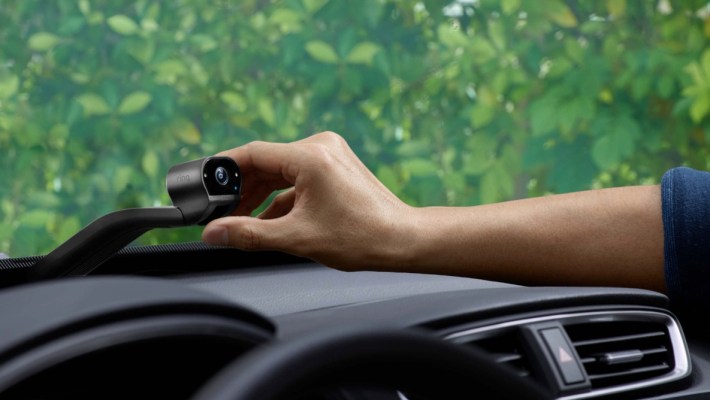The Ring Car Cam appears to be finished, doomed by an unclear target market

Once upon a time, gadgets knew what they were truly for. Toaster? Brown thy bread. Smartphone? Connect thy user. But the Ring Car Cam? Ever since its launch, it found itself in a bit of an identity crisis. After three and a half years, Amazon’s page for the camera now says, “We don’t know when or if this item will be back in stock.” Which, given that Amazon bought Ring back in 2018, is a pretty solid indicator that the bell has tolled for this little gadget. (The news was previously reported by The Verge.)
The decision won’t have come as much of a surprise to anyone following this vertical.
At its core, the Ring Car Cam promised more than mere surveillance; it aimed to be an always-connected sentinel on wheels — an extension of the home security ecosystem into the automotive space. However, the question of “Who is it for?” lingered like a persistent fog. Was it for the security-conscious homeowner, the tech-savvy car enthusiast, or perhaps a broader demographic altogether? This ambiguity in target audience became one of the device’s most significant hurdles.
Startups are often celebrated for disrupting stagnant markets, and — just like the connected doorbell Ring pioneered before the Car Cam — you could certainly make an argument that this was a market worth disrupting. You do have to know who your customers are, though, and that’s where the Ring Car Cam found itself straddling multiple domains without a clear foothold in any.
Was it a dashcam, tasked with chronicling the epic journeys and minor mishaps of daily commutes? Maybe — but in that category, the $199 price tag was steep, and the required $6 monthly subscription to keep the device “connected” was hard to swallow. The reviews published immediately after the device started shipping said as much: You can buy a damn fine dashcam with far higher resolution than Ring Camera’s 1080p for a fourth of the price.
Ring Car Cam did have some exciting innovations. Instead of USB, it used the OBD-II port in most cars. It also had a “traffic stop” mode, where users could say, “Alexa, record,” so you’d have a record of what the fuzz was up to as they pulled you over. Interesting, yes, but the truth is that for most users, USB works just fine, and most dashcams record continuously anyway, so you can just mark the clip to store your run-in with the law.
Users who opted for Ring’s version would have to be especially big fans of the Amazon Alexa ecosystem for the purchase to make sense — and while Alexa isn’t short on users, it’s hard to imagine someone so committed that they’d be eager to place the safety of their second-highest investment in the hands of the tool, too.
Amazon wouldn’t say whether it has additional products in the pipeline to replace the Ring Car Cam, but it seems unlikely the company is able to add enough value to the user experience for it to be worthwhile, especially in a market where there’s a price race to the bottom.
Moreover, discontinuing the Ring Car Cam may prompt a reassessment of consumer expectations regarding dashcams and automotive security devices. Consumers become more accustomed to integrating technology in every aspect of their lives (e.g., modern EV drivers are used to having always-on video coverage of what happens to their cars).
Tesla, incidentally, promised to make its Sentry Mode easier to access remotely through the Ring Car Connect product, but there was silence after the initial announcement. I never got it to work and promptly forgot about it — and if any Tesla users were ever able to get it to work, there seems to be remarkably little coverage of it on the internet. Which, of course, seems strange, in a world where there is no shortage of YouTubers who dissect every move Tesla makes. The discontinuation of the Ring Car Cam is likely the final nail in the coffin of that project, too.

